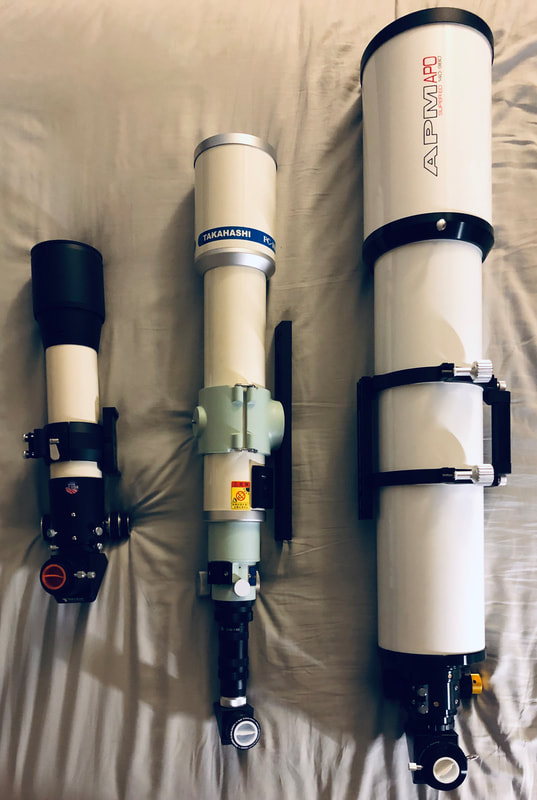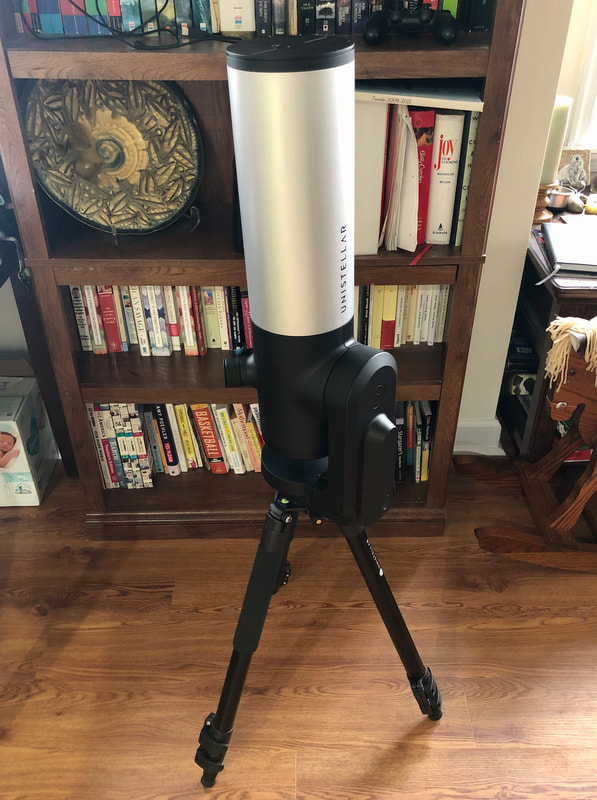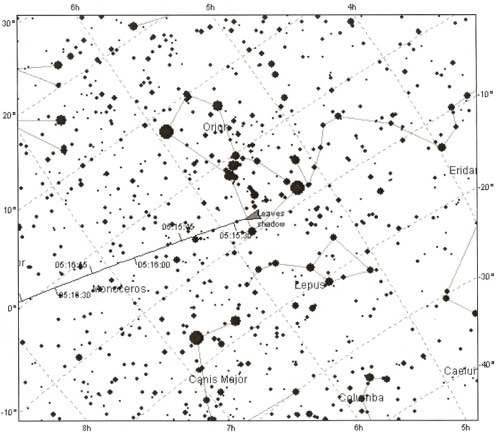|
My greatest weakness in this hobby - and maybe in life - is that I'm never sufficiently content with what I have. When I realized that my big refractor - the APM 140 - was just about as portable as my smaller and substantially less capable Vixen 115 ED115S, I started imagining what I could get by selling that telescope. Eventually I discovered the Unistellar EVScope, a remarkable little device that uses a sophisticated sensor to amplify the feeble light of galaxies, nebulae, and globular clusters. The telescope uses a technique familiar to astrophotographers - stacking images on top of each other - to provide detailed, colorful views of these objects. In theory, I reasoned, the EVScope could finally allow me to explore deep space from the city, something I've long dreamed of. The EVScope has received rave reviews from popular outlets, mixed reviews from astrophotographers, and a great deal of skepticism from seasoned observers at such websites as CloudyNights. To me, its potential was too great to ignore. I sold the Vixen and took the plunge. So, was it worth it? In a word: no. Yet I'm not disappointed, as I had to try - and I'm convinced that this has more to do with my unique expectations and restrictions than anything else.
First, the good: this is a beautifully-built product, compared to other examples of fine consumer electronics. Yes, the mechanical beauty and precision of one of my refractors, for example, makes the EVScope look like a toy. Yet it has the kind of sleek, effortless style of the Apple laptop I'm using to type this blog. Its tripod is lightweight but absolutely sturdy, while its motor slews quietly and smoothly to its targets. The app you use on your phone to control the device is wonderfully easy to use, and the instructions that come with the telescope are really well done. The whole setup provides a masterclass in accessible ease of use. Now for the bad. I spent three, maybe four hours with the EVScope before selling it. In my first session, on our rooftop, a gaggle of interested residents kept wandering over while I attempted to set up the telescope. What was I looking at? They wondered. Nothing yet, I replied, it was my first time using the telescope. Oh you'll never see anything in the city, they assured me. Eventually it got to be too much - none of my neighbors decided to wear masks - so it was back downstairs for me. I noticed that the telescope failed to achieve alignment on the rooftop, but I blamed that on the nearby lights. During the next two sessions, I walked to the nearby park. Again the telescope struggled to achieve alignment, and even when it claimed to be aligned it typically did not maneuver accurately to the right object. A back and forth with tech support (who took four days to get back to me after one query) reassured me that any problems could be solved. Yet did I have the time or energy to solve them? The reason I ultimately decided I did not has a lot to do with the telescope's "enhanced vision" feature - the feature that starts stacking images. I was impressed by the many stars that gradually winked into view when I turned it on, but somehow profoundly disappointed by the experience of seeing them. It reminded me of buying a microscope, not long ago, with an LCD screen. Adding that level of separation between reality and the eye, for me, deprives the observing experience of its most essential characteristic: actually, really, seeing what is otherwise hidden. As soon as there's a screen - and there's a screen with the EVScope even when using its eyepiece - the experience is ruined, the effect is gone, and I might as well be home scrolling through Hubble Space Telescope images. Not everyone would feel that way, but I suspect that many amateur astronomers will. It's why we spend far too much time and money to admire the faintest smudges and hazes and pinpoint pricks of light that, our brains remind us, have almost unimaginable significance. The EVScope is tailor-made for those who don't feel that thrill. As I was struggling to align the telescope, I eventually pointed it at the Moon. Here was a third disappointment: the Moon, through the telescope, was incredibly unimpressive. My aging cellphone, held up to my C90, provides a far superior view. I realized that no matter what, I would never used the EVScope with any bright Solar System object in the sky, and since lunar and planetary viewing at my primary interests, that really knocked the wind out of my sails. And this too: while I sat hunched over the EVScope in the park, someone walked close to me with a flashlight, shone it at me, and then silently walked away. Was it the sound of the motor that had attracted them? Or the red light on the telescope's base? Either way, it echoed my experience on the rooftop - and it reminded me why I don't like the silence of simpler devices while observing in the city. That, and wow do I have hate wrestling with electronics in the few hours I have to observe. I tried to suppress the thought that those three of four hours of frustration could have been truly wonderful had I brought my other telescopes to the park. So it was that the EVScope left my house this morning. I hope that the buyer likes it more than I did; certainly, there's plenty to like. Yet for my needs, with limited time in the city, it just doesn't cut it. I lost a few hundred dollars in the transaction - that always hurts - but fortunately found the C9.25 on sale for a few hundred dollars off. I bought that telescope with a couple upgrades, and now will wait until it arrives in a month or so. If there's one telescope I've regretted selling, it's the orange tube C8 I had earlier this year. As much as my experience with the Edge HD warned me about Schmidt-Cassegrains, the orange tube restored my faith. So, here's hoping that the 9.25 provides a level of planetary performance that even the APM 140 can't quite match. I suppose that, for now, I need to accept that some corners of deep space are simply off limits for me in the city.
0 Comments
Leave a Reply. |
Archives
March 2024
Categories
All
|





 RSS Feed
RSS Feed